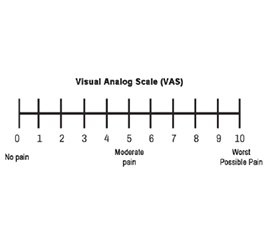Международный неврологический журнал Том 21, №4, 2025
Вернуться к номеру
Нейропсихологічні зміни та рівень болю у гострий період поєднаної краніофаціальної травми
Авторы: Орос М.М. (1), Петрова У.М. (2), Клименко О.В. (3)
(1) - Медичний факультет ДВНЗ «Ужгородський національний університет», м. Ужгород, Україна
(2) - Інститут неврології і психології, м. Ужгород, Україна
(3) - Клінічна лікарня «Феофанія» ДУС, м. Київ, Україна
Рубрики: Неврология
Разделы: Клинические исследования
Версия для печати
Актуальність. Поєднаними травмами називають такі, за яких дія одного травматичного агента припала на різні анатомічні ділянки. Тяжкість стану постраждалих при поєднаній краніофаціальній травмі — поєднанні ушкоджень тканин мозку, черепа, обличчя — може бути зумовлена кількома факторами, з яких черепно-мозкова травма є пріоритетною. Метою дослідження було вивчення рівня тривоги, депресії та залежності болю і нейропсихологічних змін у пацієнтів в гострий період поєднаної краніофаціальної травми (струс головного мозку та перелом кісток щелепно-лицевої ділянки). Матеріали та методи. У нашому дослідженні було обстежено 50 хворих молодого та середнього віку з поєднаною краніофаціальною травмою. Усім пацієнтам було проведено детальний неврологічний огляд в гострому періоді травми та через 7–10 днів для оцінки динаміки стану. Проводились оцінка рівня тривожності та депресії (HADS), додаткова оцінка наявності симптомів депресії (шкала депресії Бека) та оцінка болю за візуально-аналоговою шкалою. Результати. Згідно з результатами тестування за HADS, у хворих з поєднаною краніофаціальною травмою показники тривоги були такими: субклінічно виражена тривога спостерігалась в 12 (24 %) опитуваних, в 1 (2 %) пацієнта була виражена тривога, в 37 (74 %) пацієнтів не спостерігалось ознак тривоги. Середнє значення тривоги становило 5,9 ± 2,6. Водночас за HADS-D: 6 пацієнтів (12 %) мали субклінічні ознаки депресії, 2 (4 %) — клінічно виражені симптоми депресії, в 42 пацієнтів (84 %) відсутні вірогідно виражені симптоми депресії. При проведенні кореляційного аналізу між показником за ВАШ та рівнем тривоги (за HADS) виявлено слабкий кореляційний зв’язок, тоді як при вивченні взаємозв’язку між ВАШ та рівнем депресії (згідно зі шкалою HADS) такого зв’язку встановлено не було. Висновки. Отримані результати свідчать про необхідність неврологічного огляду та проведення рутинних і, за необхідності, поглиблених тестів для оцінки тривожно-депресивних змін у цієї групи пацієнтів, особливо серед категорій з вираженим больовим синдромом, для розширення можливостей лікування і вчасної корекції стану пацієнтів.
Background. Combined injuries are those in which the action of a single traumatic agent affects different anatomical regions. The severity of the condition of patients with combined craniofacial trauma (injuries to the brain, skull, and facial tissues) may be due to several factors, with craniocerebral trauma being the most significant. Purpose of the study was to assess the levels of anxiety, depression, and pain, as well as neuropsychological changes in patients during the acute period of combined craniofacial trauma (including concussion and maxillofacial bone fractures). Materials and methods. This study involved 50 young and middle-aged patients with combined craniofacial trauma. All participants underwent a detailed neurological examination in the acute period of injury and 7–10 days later to assess the dynamics of their state. Anxiety and depression were evaluated using the Hospital Anxiety and Depression Scale (HADS), additional depressive symptoms were assessed with the Beck Depression Inventory, and pain levels were measured on the Visual Analogue Scale (VAS). Results. According to the HADS-A, patients with combined craniofacial trauma had the following anxiety indicators: subclinical anxiety was observed in 12 (24 %) patients, clinical anxiety — in 1 (2 %) case, while 37 (74 %) people showed no signs of anxiety. The mean anxiety score was 5.9 ± 2.6. On the HADS-D, 6 (12 %) participants had subclinical symptoms, 2 (4 %) had clinically significant symptoms, and 42 (84 %) hadn’t notable signs of depression. Correlation analysis revealed a weak relationship between VAS scores and anxiety levels (on the HADS-A), whereas no significant correlation was found between VAS scores and depression levels (on the HADS-D). Conclusions. The results suggest the importance of neurological evaluation and the implementation of both routine and, if necessary, in-depth tests for assessing anxiety and depressive disorders in this group, particularly in those experiencing pronounced pain, to enhance treatment strategies and timely patients’ management.
легка черепно-мозкова травма; поєднана краніофаціальна травма; тривожність; біль
mild traumatic brain injury; combined craniofacial injury; anxiety; pain

